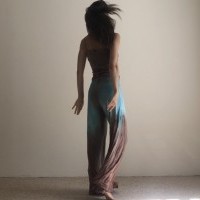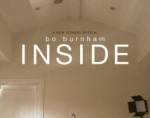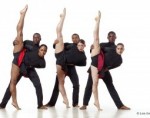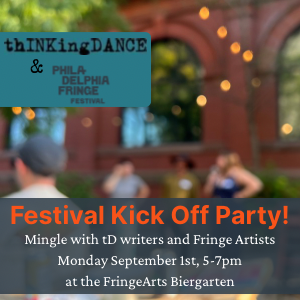
An Inquiry of Oz
by Kat J. Sullivan
Theatre Philadelphia and thINKingDANCE continue our partnership, begun in 2018, bringing coverage and new perspectives to Philadelphia’s vibrant theatre scene.
They’ve done it—Dorothy and her gang of misfit friends defeat the Wicked Witch of the West and obtain the witch’s magical umbrella, as ordered by the Wizard of Oz himself. Glinda reveals that Dorothy has had the power to zap herself back to Kansas the whole time in the form (in this Quintessence Theatre version) of her sparkly silver boots. Dorothy, played by Leigha Kato, clicks her heels and recites the famous, “There’s no place like home.” Her scenery begins to shift, brought to life by performer Chloe Mollis McBride as the mischievous Cyclone who whirls around onstage with a replica, on a staff, of the Gale family’s Kansas homestead. The lighting flickers in and out but suddenly settles; Dorothy and Toto look around in a daze. I expect Aunt Em and Uncle Henry to reemerge, relief spread on their faces at locating their missing niece, or even the unsavory Miss Gulch, at last. Instead, Glinda and the Oz crew (the Scarecrow, Tinman, and Lion) pop out from the pillars. With a wink at Dorothy, and a final umph of the house band, the stage lights go out. The end.
I blink; I’d expected the dénouement, the satisfaction of seeing Dorothy reunite with her family, grateful to be back in familiar Midwestern America. Instead, Quintessence Theatre’s imagining ends without closure—utterly abrupt.
Admittedly, my first thought was that it was an oversight. Only after the performance, when reading director Lee Cortopassi’s notes to the audience, do I see it as an intentional choice, one that still confuses me. Cortopassi quotes Jack Zipes, an American folklorist: “Dorothy does not yet know what home is, and only those readers familiar with L. Frank Baum’s fourteen fairy tale novels about Oz know that home cannot be found in America. Home is Oz, a transcendent utopian paradise, that must be protected from America.” An intriguing interpretation, though one I didn’t see explored by Quintessence beyond sloughing off the ending of the story.
In other ways, the Quintessence production walks hand-in-hand with the 1939 movie: we see the same chronological sequence of events, the same characters, the same songs. Glinda is still Good and the Wicked Witch of the West is still Bad. The Scarecrow needs a brain, the Tinman a heart, and the Lion an ounce of bravery. Major thematic elements are kept intact. But in the details, the play strikes out on its own. Costuming has a large role in this; in addition to the silver boots, Glinda (Leah Gabriel) is reimagined as a rock-and-roll goddess in white platform boots and leather jacket. (She first emerges to a head-banging chord atop a rolling staircase and it is fabulous.) McBride’s spinning storm-surge is a creative embodiment of the twister; indeed, her choreography throughout the performance gives me much to chew on as a dance-turned-theater critic. Her dance score for the “Jitterbug” scene (the Wicked Witch has cursed Dorothy and friends by sending critters to bite them, forcing them to dance until collapsing) has the flavor of “The Evolution of Dance,” incorporating many styles and inciting laughter as our heroes grimace with exhaustion while cha-cha-ing.
Questioning the concept of “home” as dichotomized by Oz and Kansas is a fresh and interesting take on the well-known tale; unfortunately, I didn’t see it fully explored. Dorothy remains the traditional Garland heroine—the epitome of purity and politeness. She doesn’t seem to seriously doubt whether or not she wants to return to her aunt and uncle, or wonder if she is better off in her fantasy world than in one where nasty neighbors rope in the local sheriff to take away your dog. Oz is ultimately still a make-believe realm, a distracting respite from the harshness of Dorothy’s reality, but not a home. If it were, surely Dorothy would have chosen differently.
Did Quintessence succeed in casting the classic tale in a new light? That interpretation remains somewhere over the rainbow.
To join the conversation, follow thINKingDANCE and Theatre Philadelphia online and on social media to read, share, and comment.
The Wizard of Oz, Quintessence Theatre Group, Sedgwick Theater, Nov 27-Dec 29.
By Kat J. Sullivan
December 30, 2019









